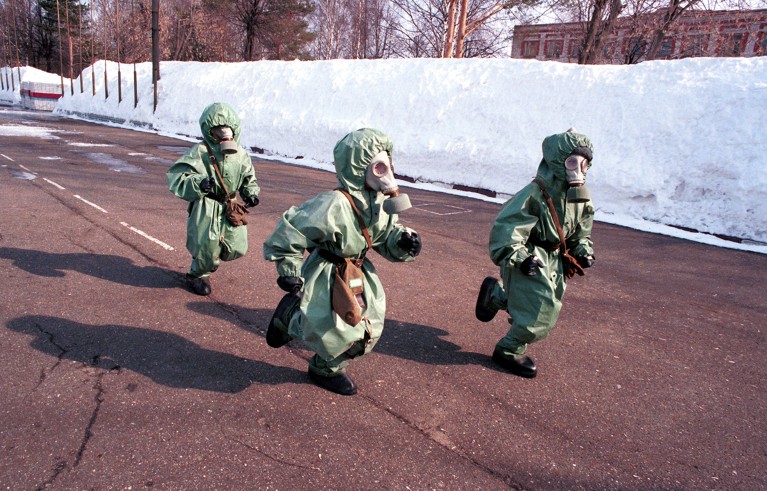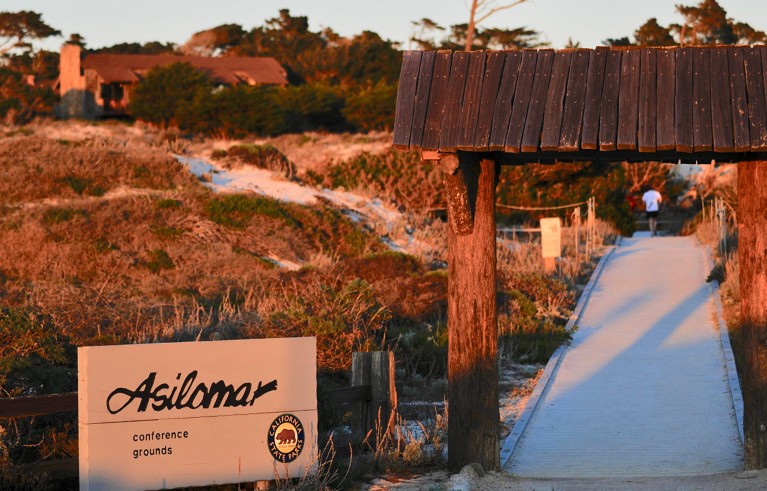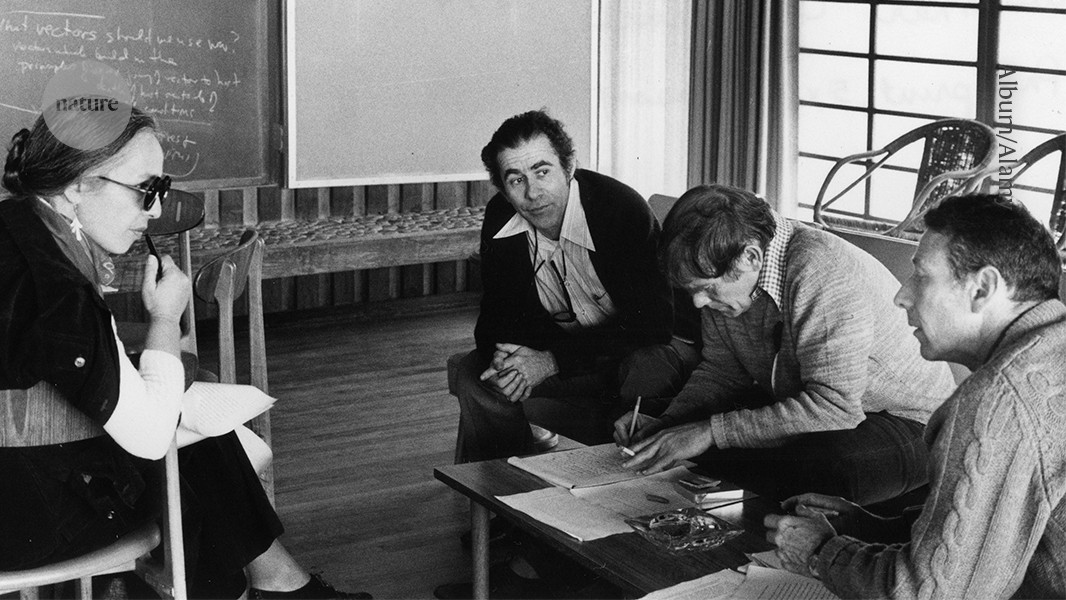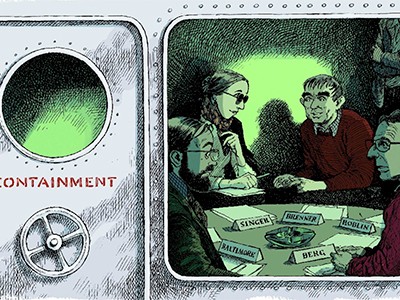On 24 February 1975, some 150 people met at the Asilomar Conference Grounds near Monterey on the Californian coast. They were mostly scientists from the United States, together with representatives of various companies and government agencies, and 16 journalists. Their subject was the new technology of recombinant DNA — molecules created in a laboratory by stitching together genetic material from different organisms. Researchers were excited by the possibilities for discoveries, and the potential of the technique to produce drugs, for example using specially engineered bacteria to make insulin. But they were also terrified that they might inadvertently create diseases that could infect lab workers and the wider community.
By the end of the meeting, its participants had agreed to adopt biosafety protocols that are still in force in the United States, and which have hugely influenced similar regulations worldwide. The meeting has become known simply as Asilomar, a byword for how a scientific community came together to forge consensus on a thorny topic. It is often held up as an example of how science can self-regulate without the involvement of politicians (although some criticize it for just those same reasons). Periodic calls can be heard for ‘another Asilomar’ in other potentially hazardous fields such as synthetic biology, nanotechnology and artificial intelligence.
But grasping the full significance of a historic event often involves understanding what was not discussed and highlighting the decisions that were not taken. Half a century on from Asilomar, that longer view provides a different perspective on two unspoken, yet essential, issues that loomed in the background of the meeting — the technology’s potential for creating riches and for destroying human life.
Asilomar 1975: DNA modification secured
Debates about the possible hazards of recombinant DNA first came to the fore in June 1971. Robert Pollack, a postdoctoral researcher at Cold Spring Harbor Laboratory on Long Island, New York, learnt from Janet Mertz, a PhD student on a course he was teaching, that her supervisor wanted her to transfer DNA from simian virus 40 (SV40) into the gut bacterium Escherichia coli. SV40 could cause uncontrolled growth in hamster cells, and it was feared it might cause cancer in humans.
Mertz’s supervisor was Paul Berg at Stanford University in California, a leading molecular biologist in his mid-40s. Pollack, more than ten years Berg’s junior, had never met him but was deeply alarmed at the idea, and so telephoned him the next day to ask why he was planning to do such a “crazy” experiment. The conversation did not last long; according to Pollack, Berg responded, “Who the bleep are you?”.
Berg later recalled that he thought the concerns were “bunk” and “outrageous”. But this exchange and subsequent conversations with friends, colleagues and students kindled doubts in his mind. The experiment he had given to Mertz was not central to his research project, and faced with opposition and the slight possibility that the experiment might go awry, he abandoned this part of it.
Berg’s creation of the first recombinant DNA the following year — inserting a DNA segment from E. coli into SV40 — did not cause outrage. Indeed, it helped him to win the Nobel Prize in Chemistry in 1980. But the subsequent discovery1 of the powerful method of plasmid-based gene cloning by a team including Stanley Cohen at Stanford University and Herb Boyer at the University of California, San Francisco (UCSF), did lead to great alarm. By allowing researchers to move any piece of DNA into a bacterium where its function could be studied, this technique “made it possible for anybody to do anything”, as Berg put it later. When Boyer presented the technique at a conference in June 1973, participants raised their concerns with the meeting’s organizers, who published a letter2 in Science warning that the creation of “new kinds of hybrid plasmids or viruses, with biological activity of unpredictable nature … may prove hazardous to laboratory workers and to the public”.
The US National Academy of Sciences (NAS) tasked Berg with convening a working group to address these concerns. In July 1974, Berg, Boyer, Cohen and eight others — including James Watson, the co-discoverer of the structure of DNA — wrote an open letter3 calling on scientists to defer all such experiments “until the potential hazards of such recombinant DNA molecules have been better evaluated or until adequate methods are developed for preventing their spread”. They also announced a meeting to be held in early 1975 to discuss the matter. For perhaps the first time in history, scientists had publicly decided to stop doing an experiment until it was safe. This soon became known as a moratorium — a word adopted from opposition to atomic-weapons testing.
This was the backdrop to the Asilomar meeting, organized by Berg under the auspices of the NAS. Its main aim was to agree biosafety protocols that could be adopted by the US National Institutes of Health (NIH) as a condition of funding, without fractious lawmakers getting involved. Researchers from Europe were culturally less hostile to the prospect of legislation. In many countries outside the United States, laws using protocols very similar to those adopted at Asilomar eventually governed recombinant DNA research.
The lure of lucre
In early 1975, Berg learnt to his horror that administrators at Stanford and UCSF had applied for a patent on the Cohen–Boyer cloning technique4. If all went well, both universities — as well as Cohen and Boyer — stood to become very rich. Berg was keen to see the moratorium lifted to enable research to continue. He disagreed with the Cohen–Boyer patent, but immediately understood that, were the patent application to become widely known, the Asilomar meeting would be fatally compromised. It would look as if the researchers wanted to lift the moratorium so that they could make money. Caught in a bind, Berg had no alternative but to press on in the hope that no one would leak the story.
This was more problematic than it might seem. There were curious reporters at Asilomar, including Michael Rogers, a writer for Rolling Stone, a US counter-cultural music magazine. In an article5 about the meeting, Rogers described the possibility of producing insulin in a recombinant microorganism, adding drily, “The prospect is sufficiently realistic that the conference includes representatives from the research arms of drug manufacturers Merck, Roche, G. D. Searle — and even General Electric.” However, despite the twitching of Rogers’ journalistic antennae, there was no revelation of the patent at Asilomar or in the immediate aftermath.

Children at a military barracks in Kineshma, Russia, simulate a biochemical attack in 1999.Credit: Oleg Nikishin/Hulton Archive/Getty
The Asilomar recommendations were accepted by the NIH in 1976. These involved increasingly strict biosafety measures with increasing levels of perceived hazard. They were later summarized by Gwladys Caspar, a biosafety officer at Harvard University in Cambridge, Massachusetts, as: level 1 — don’t eat it; level 2 — don’t touch it; level 3 — don’t breathe it; level 4 — don’t do it.
At the end of 1977, researchers working with a tiny start-up company co-founded by Boyer, named Genentech, produced a human growth hormone in a microbe6 and then repeated the trick with insulin7. Debate began to focus not on the morality of patenting processes that had been developed with public money, but instead on who was going to get rich. The US Patent Office eventually accepted the Stanford–UCSF application in early December 1980, following a landmark US Supreme Court ruling, Diamond v. Chakrabarty. Less than two weeks after the patent was finally granted, the Bayh–Dole Act was signed into law, which encouraged recipients of federal funding to take out patents on discoveries and to license them.
This all led to an explosion of venture-capital-funded biotechnology. The excitement soon infected Nature, which created the “Nature guide to bio-riches”, an index of US biotechnology stocks that was published in the journal each month. Taking Boyer and Cohen’s patent alone, during its lifetime (17 years in the United States, 20 in Europe) more than 2,000 products were developed using the technique, generating billions in sales. The total revenue was around $255 million; each university received $90 million, with Boyer and Cohen sharing the rest8.
The intrusion of vast potential wealth also had a profound effect on relations between scientists. Competition became even greater, with inevitable conflicts of interest (although as late as 1997, a Nature editorial9 dismissed such concerns). Scientists stopped speaking openly about their research, as Berg complained a few years later: “No longer do you have this free flow of ideas. You go to scientific meetings and people whisper to each other about their companies’ products. It’s like a secret society.” Had the underlying conflict of interest of some of those debating at Asilomar been revealed in 1975, the meeting’s decisions would surely have been the focus of greater political opposition.
Hidden menace
At the opening session of Asilomar, biologist David Baltimore at the Massachusetts Institute of Technology in Cambridge, speaking for the organizing committee, ruled that there would be no discussion of the danger of recombinant DNA being used to create bioweapons, for example by introducing toxin genes into highly infectious bacteria. As he explained, although the issue of bioweapons was a very serious one “which many of us care about and have cared about for a long time”, the meeting was “not designed to deal with that question”, which was “peripheral” and might “confuse” the discussion.
Many people felt that the menace of biological warfare had been hugely reduced by the 1972 United Nations Biological Weapons Convention (BWC). This entered into force a month after Asilomar, following ratification by the Soviet Union, the United States and 20 other countries. The BWC was partly prompted by then US president Richard Nixon’s unexpected and unilateral cancellation in 1969 of the US biological warfare programme, which used natural microbial pathogens and had been developed during the Second World War. All US bioweapon stockpiles were declared destroyed.
However, the microbiologist and anti-bioweapons campaigner Richard Novick, together with colleagues working on plasmids, wanted the final Asilomar declaration to include a clear statement on the threat of recombinant DNA bioweapons10. The hectic last session of the conference saw Berg and Baltimore invoking the right of academic enquiry as they rejected any declaration that some dangerous experiments should never be carried out. Berg’s compromise formulation, adopted by the meeting — “there is a class of experiments that should not be done at all irrespective of the type of containment available today” — left it open whether such experiments would be permissible in the future.

The February 1975 meeting at the Asilomar resort in California lifted a moratorium on a controversial strand of DNA research.Credit: John D. Ivanko/Alamy
Unknown to almost everyone at Asilomar, exactly this kind of work was being proposed in the Soviet Union. In April 1974, the federation had launched a top-secret biological-warfare programme, overseen by an agency called Biopreparat, that would use recombinant DNA alongside existing bioweapons such as anthrax and plague11. The Soviet delegation to Asilomar included three men who were deeply involved with Biopreparat: at the time of its launch, Alexander Baev and Andrej Mirzabekov were members of the military–scientific body that oversaw the recombinant DNA bioweapons project, and Vladimir Engelhardt, who at 80 years old was the senior Soviet delegate, was director of the Moscow-based Institute of Molecular Biology of the Soviet Academy of Sciences, one of the main contractors for this research.
These cultured and knowledgeable men had excellent scientific reputations and were close friends of many Western molecular biologists. Their involvement in the bioweapons project was a consequence of the terrible situation in Soviet genetics. From the 1930s to the mid-1950s, the Soviet regime had been virulently hostile to genetics, driven by the ideas and ambition of the agronomist Trofim Lysenko, a favourite of the country’s then-leader Josef Stalin. Even though Lysenko’s influence eventually waned in the 1960s, Soviet genetics was in a parlous state. This led Soviet molecular biologists to agree to create bioweapons in return for a huge increase in funding.
There doesn’t seem to have been the slightest suspicion among the Western scientists that anything might be amiss. Looking back, the age and behaviour of the Soviet delegation at Asilomar seemed almost designed to deflect attention. According to the Rolling Stone article, one US microbiologist chuckled: “These Russians, they just send over the old guys from the [Soviet Academy of Sciences] who don’t know anything. You ask them something and they hedge around — and it’s not that they’re hiding things … they just don’t know in the first place”. Delegates were further amused when one of the Soviets used a camera fitted with a flashbulb to take photographs of slides that were being presented (all that would have appeared on the film would be a white screen). Convinced that the Soviets were harmless, the chortling Americans paid them no further attention, although one of the conference organizers, Maxine Singer, later officially noted their support and cooperation.
Apart from Rogers, the journalists were equally incurious. He found the Soviet presence “somewhat puzzling”, and asked one of the delegates whether the Soviet Union viewed molecular biology as militarily significant (there was no direct answer). Rogers also noted that the delegation was accompanied by “a charming, dapper, San Francisco vice-consul, performing chaperon service”. You do not need to be a spy novelist to realize this man’s real role — the Soviet Union’s consulate in San Francisco was the notorious centre of a huge spy operation (and was closed down by the US government in 2017). It seems unlikely that Western security agencies blithely allowed their scientists to discuss the future of genetic engineering, with its evident potential for bioweapons development, and in the presence of Soviet scientists, without any supervision or surveillance. What form that might have taken is unknown.
Biological arms race
Whether or not the Soviet delegation learnt anything at Asilomar that was of direct relevance to the Biopreparat programme, the conference and its decisions did provide civilian cover for the huge expansion of biotechnology in the Soviet Union. On 20 February 1977, the Los Angeles Times suggested Soviet interest in this area could be used to develop bioweapons, but Baev insisted that any use of recombinant DNA in biological warfare would breach both the BWC and “the moral code of science”. The US Defense Intelligence Agency was similarly sanguine (or unimaginative), reporting in 1976 that the sudden increase in Soviet genetic-engineering capacity was simply a response to “embarrassment” at the US lead in the field.



